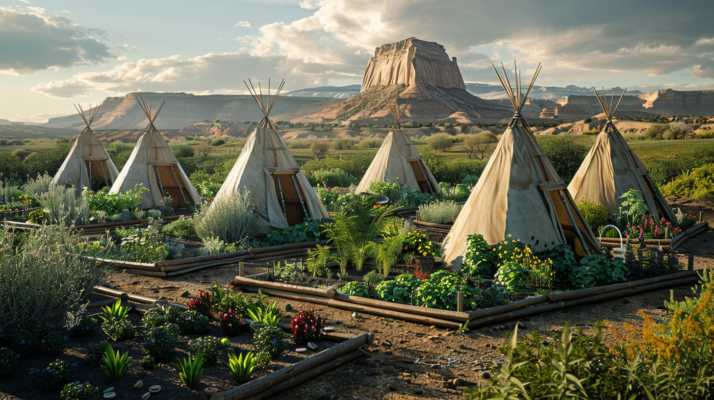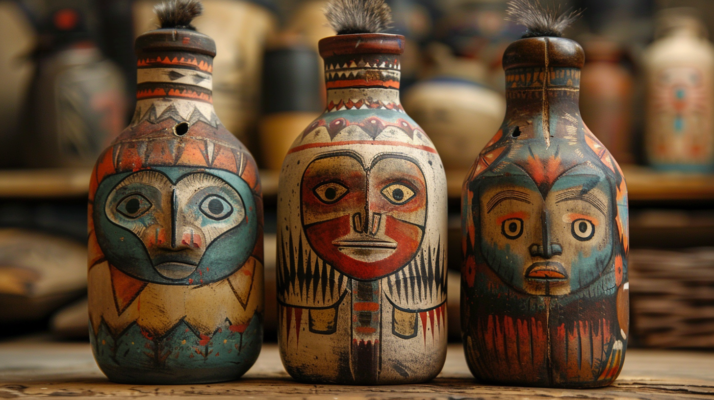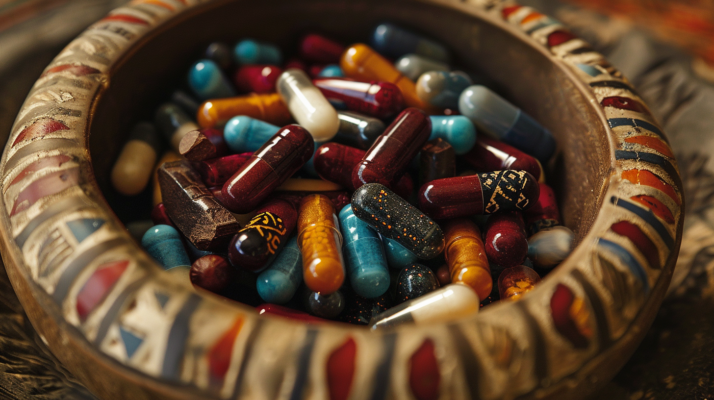From kayaks to contraceptives to pain relievers, Native Americans developed significant innovations long before Columbus set foot in the Americas.
From the southernmost point of South America to the Arctic, Native Americans created a multitude of innovations—from kayaks and protective goggles to baby bottles, birth control, genetically modified crops, and pain relievers—that allowed them to thrive in diverse environments.
In fact, early European explorers who arrived in the Western Hemisphere were so impressed by the achievements of the Native peoples they met that they concocted stories about Native Americans being descendants of ancient Phoenician traders or a lost tribe of Israel to account for their technological advancements.
“People don’t realize the ingenuity or the knowledge that native people had, and continue to have about the world around them,” says Gaetana De Gennaro, a supervisory specialist at the National Museum of the American Indian in New York, who oversees a permanent interactive exhibit on Native American inventions.
Because various Native American groups were interconnected through trade routes, new inventions developed by one group could rapidly spread across North, South, East, and West, according to De Gennaro, a member of the Tohono O’odham tribe in southern Arizona.
Corn
Although it’s now a common crop, corn was carefully cultivated by ancient farmers as far back as 10,000 years ago. Native Americans then taught European settlers how to grow it.
“Everybody knows about corn, but they don’t know that it’s a food that wouldn’t exist without human intervention,” De Gennaro points out.
Farmers in northern Guatemala and southern Mexico selectively bred teosinte, a wild grass, over many generations to enlarge the ear and create kernels soft enough for humans to eat. Once they’d developed the corn plant, this innovation spread throughout the Western Hemisphere.
Rubber
Some Native American innovations were taken over by Europeans, who had the trade networks and manufacturing infrastructure to commercialize them, sometimes adding improvements. For example, rubber was a material created by Native Americans, and then Columbus brought a rubber ball back to Europe, De Gennaro notes.
After Charles Goodyear developed the vulcanization process in the 1830s to make rubber withstand heat and cold, colonizers established vast rubber tree plantations in Asia to supply the raw material for factories. “Now, rubber is used all over the world,” De Gennaro says.
Kayaks
The Inuit in the Arctic designed small, narrow boats with sealed cockpits to protect the paddler from sinking if the craft capsized, according to Canadian technology historians David Johnston and Tom Jenkins. The classic vessels were constructed entirely from natural materials, with wood or whalebone frames covered by stitched sealskin or other animal hides. Today, modern kayaks are sometimes made from materials like plastic and carbon fiber, but as De Gennaro notes, “the design is still essentially the same.”
Snow Goggles
The Inuit also crafted goggles made from wood, bone, antler, or leather to protect their eyes from overexposure to sunlight reflected off snow. “They’d put a slit in there, to simulate the way that you can squint,” De Gennaro explains. “It cut down on the ultraviolet rays that entered the eyes.” These snow goggles were the predecessors of modern sunglasses.
Cable Suspension Bridges
The Inca of South America figured out how to weave mountain grasses and other vegetation into cables, sometimes as thick as a person’s body, and then used them to build super-strong suspension bridges that spanned across gorges. Some of these structures spanned longer distances than anything European engineers of the time could construct with stone, though modern steel suspension bridges eventually achieved far greater scale. The last of the ancient Inca-style grass cable suspension bridges still spans a gorge in Peru’s Canas Province.
Raised-Bed Agriculture
Natives in South and Central America developed the technique of enriching soil and piling it to build raised garden plots called chinampas on swampy land and in lakes, according to Emory Dean Keoke and Kay Marie Porterfield in their Encyclopedia of American Indian Contributions to the World. This technique was a precursor to the raised-bed farming used for modern vegetable production.
Baby Bottles
The Iroquois fashioned baby bottles from dried and greased bear gut, adding a nipple made from a bird’s quill, according to Iroquois historian Arthur C. Parker.
Anesthetics and Topical Pain Relievers
Native American healers were pioneers in pain relief. In what is now Virginia, natives used jimson weed (scientific name Datura stramonium) as a topical analgesic, grinding the root to make a plaster applied to external injuries like cuts and bruises, according to Keoke and Porterfield’s book.
Healers also had patients ingest the plant as an anesthetic when setting broken bones. Another native remedy for pain and inflammation was tea brewed from the bark of the American black willow (Salix nigra), which contains salicin. Once in the body, salicin converts to salicylic acid, the active ingredient in modern aspirin. Native Americans also used capsaicin, found in hot peppers, for topical pain relief, according to De Gennaro.
Syringes
Native Americans created syringes from animal bladders and hollow bird bones to inject medications, according to Technology in America: A Brief History. This technology didn’t appear in European medicine until the 1850s, when Scottish physician Alexander Wood began using needles to inject morphine for pain relief.
Hammocks
When Christopher Columbus landed in the Caribbean, he found natives resting in hammocks, beds made from cotton netting suspended between two trees or poles, as noted in his letters. Hammocks were so comfortable and convenient that European sailors started sleeping in them on merchant and naval ships, according to Indians of North America.










